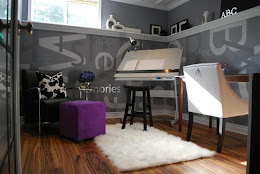
Trulli (the plural form) are structures with gray stone cone-shaped roofs. They’re found in Bari and Tarano in the Puglia region of Italy. There are over 400 trulli in the town of Alberobello, considered to be the “trulli capital”.
The origin of these oddly shaped houses is unknown. Traditionally, trulli were built without any cement or mortar. One of the more popular theories is that because of high taxation on property, the people of Puglia created trulli so that they could be dismantled and moved out of sight when the taxman was in the area. Then they would put them back together once the taxman was gone.
Today, trulli have solid foundations. No hiding from the taxman anymore!! The stone used to build a trullo helps to keep the house cool in the hot Italian summer. The outside of the cone is built from chiancarelle (stone slabs) of different sizes that serve as roofing tiles.
As you can see in the pictures, there’s typically a pinnacoli (pinnacle) at the top of each trullo’s cone. The significance of the pinnacoli is still unclear. Some people believe it gives magic powers. Others believe it represents the family that lives in the trullo.
Sketches of pinnacoli (from www.alberobello.blogspot.com):
Many cones have symbols painted on them. The symbols are painted with lime. Legend has it that they were painted for magical or propitiatory rites. The meaning of some common symbols are to protect the family living in the trullo from the evil eye, the worship of some deity, and the hope for a good harvest.
From left to right are Primitive, Christian, and Magic symbols (from www.alberobello.blogspot.com):
Now let’s take a peek inside and look up some trulli cones…
Some pretty trulli exteriors…
The interior of a restored trullo might surprise you…
The trullo in the following pictures is Villa Santoro (featured on www.villapuglia.com). Villa Santoro recently underwent a complete renovation and rebuild by an Austrian designer and a Milanese architect team. It combines and retains the Trullo and Masseria styles typical and unique to the area. Many of the original trullo features have been maintained, including the original stonework and vaulted ceilings. The interior is clean and minimal, but the stone gives it character and warmth.
The bright & light interior…
The backyard isn’t too shabby either!!
Beautiful blue skies…
The sun is setting on Villa Santoro…
I hope you enjoyed visiting these trulli unique Italian houses as much as I did :-)
Read about a trullo restoration here:
www.mmenterprises.co.uk/blog/labels/trulli.htm
Sources:






































































